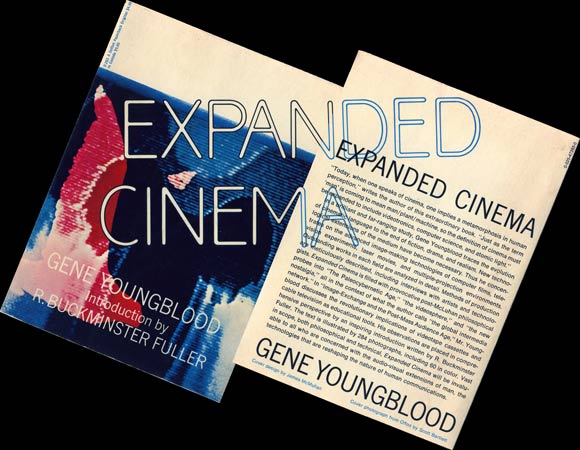Michael J. Shapiro: Cinematic Geopolitics (2008)
Filed under book | Tags: · biopolitics, cinema, film, film theory, geopolitics, military, philosophy of film, politics, war

In recent years, film has been one of the major genres within which the imaginaries involved in mapping the geopolitical world have been represented and reflected upon.
In this book, one of America’s foremost theorists of culture and politics treats those aspects of the “geopolitical aesthetic” that must be addressed in light of both the post cold war and post 9/11 world and contemporary film theory and philosophy. Beginning with an account of his experience as a juror at film festival’s, Michael J. Shapiro’s Cinematic Geopolitics analyzes the ways in which film festival space and both feature and documentary films function as counter-spaces to the contemporary “violent cartography” occasioned by governmental policy, especially the current “war on terror.”
Influenced by the cinema-philosophy relationship developed by Gilles Deleuze and the politics of aesthetics thinking of Jacques Ranciere, the book’s chapters examines a range of films from established classics like the Deer Hunter and the Battle of Algiers to contemporary films such as Dirty Pretty Things and the Fog of War. Shapiro’s use of philosophical and theoretical works makes this cutting edge examination of film and politics essential reading for all students and scholars with an interest in film and politics.
Published by Routledge, 2008
ISBN 041577635X, 9780415776356
180 pages
Key terms:
Okwe, Deer Hunter, Dirty Pretty Things, fog of war, war on terror, El Salvador, Road to Guantanamo, Critique of Judgment, Gilles Deleuze, Jacques Ranciere, biopolitical, Cold War, Afghanistan, geopolitical, Fahrenheit 9/11, John Cassady, Iraq, Vietnam War, Predator Drone
PDF (updated on 2012-9-7)
Comment (0)Gene Youngblood: Expanded Cinema (1970)
Filed under book | Tags: · art, art history, computer film, computing, cybernetics, expanded cinema, experimental film, film theory, holography, intermedia, media art, multimedia, technology, television, video, video art

“The first book to consider video as an art form, was influential in establishing the field of media arts. In the book he argues that a new, expanded cinema is required for a new consciousness. He describes various types of filmmaking utilising new technology, including film special effects, computer art, video art, multi-media environments and holography.” (Wikipedia)
Part One: The Audience and the Myth of Entertainment
Part Two: Synaesthetic Cinema: The End of Drama
Part Three: Toward Cosmic Consciousness
Part Four: Cybernetic Cinema and Computer Films
Part Five: Television as a Creative Medium
Part Six: Intermedia
Part Seven: Holographic Cinema: A New World
Key words and phrases: Jordan Belson, expanded cinema, Nam June Paik, Buckminster Fuller, Stan VanDerBeek, videotronic, Ronald Nameth, Carolee Schneemann, John McHale, Expo 67, slit-scan, John Cage, light pen, Gene Youngblood, Otto Piene, Beflix, Howard Wise, KQED, Samadhi, WGBH-TV
Introduction by R. Buckminster Fuller
Publisher E.P. Dutton, New York, 1970
SBN 0525101527
432 pages
Reviews: Paul Cowen (Leonardo, 1972), Thomas Beard (Artforum, 2020), Caroline A. Jones (Artforum, 2020).
Analysis: Adam Sindre Johnson (2010, NO).
PDF (45 MB, no OCR, via Internet Archive, added on 2016-3-2)
PDF, PDF, PDF (5 MB, OCR)
PDF chapters
Sean Cubitt: The Cinema Effect (2004)
Filed under book | Tags: · cinema, digital cinema, film, film history, film theory, image, post-cinema

“It has been said that all cinema is a special effect. In this highly original examination of time in film Sean Cubitt tries to get at the root of the uncanny effect produced by images and sounds that don’t quite align with reality. What is it that cinema does? Cubitt proposes a history of images in motion from a digital perspective, for a digital audience.
From the viewpoint of art history, an image is discrete, still. How can a moving image–constructed from countless constituent images–even be considered an image? And where in time is an image in motion located? Cubitt traces the complementary histories of two forms of the image/motion relationship–the stillness of the image combined with the motion of the body (exemplified by what Cubitt calls the “protocinema of railway travel”) and the movement of the image combined with the stillness of the body (exemplified by melodrama and the magic lantern). He argues that the magic of cinema arises from the intertwining relations between different kinds of movement, different kinds of time, and different kinds of space.
He begins with a discussion of “pioneer cinema,” focusing on the contributions of French cinematic pioneers in the late nineteenth and early twentieth centuries. He then examines the sound cinema of the 1930s, examining film effects in works by Eisenstein, Jean Renoir, and Hollywood’s RKO studio. Finally he considers what he calls “post cinema,” examining the postwar development of the “spatialization” of time through slow motion, freeze-frame, and steadi-cam techniques. Students of film will find Cubitt’s analyses of noncanonical films like Sam Peckinpah’s Pat Garrett and Billy the Kid as enlightening as his fresh takes on such classics as Renoir’s Rules of the Game.”
Publisher MIT Press, 2004
ISBN 0262033127, 9780262033121
456 pages
PDF (updated on 2021-1-29)
Comment (0)
